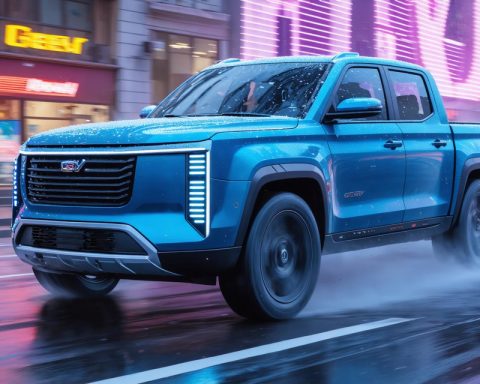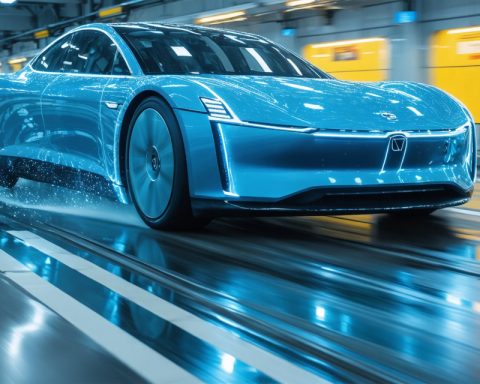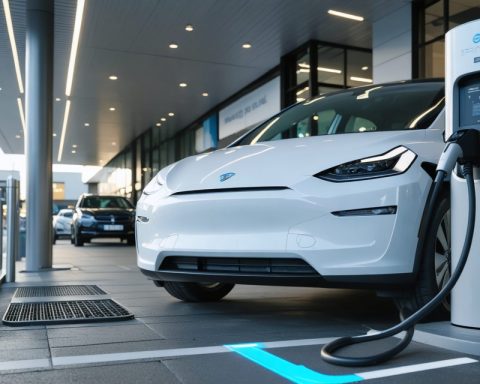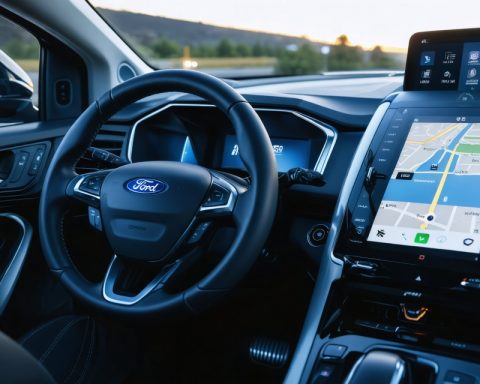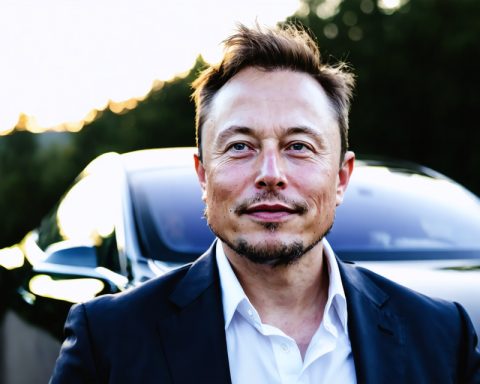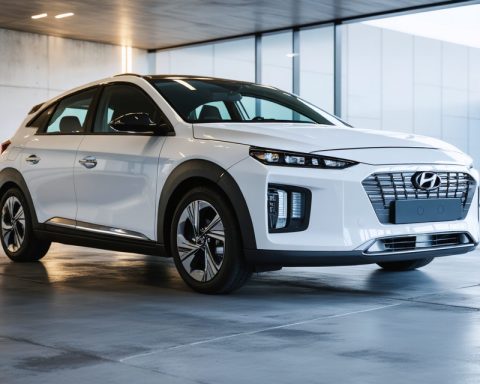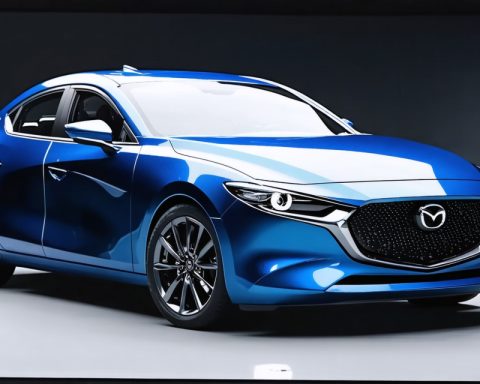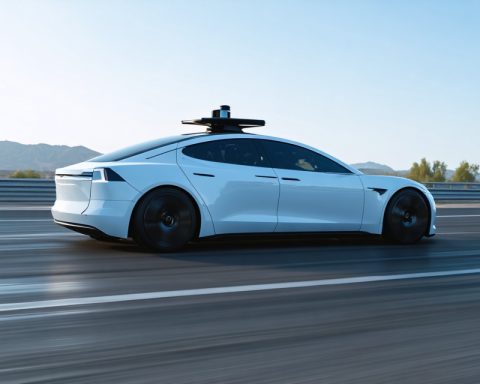- The Hyundai plant in Georgia marks a strategic shift towards hybrid vehicle production, spurred by changing consumer demands and geopolitical influences.
- This transition aligns with a decrease in pure electric vehicle demand, opting instead to capitalize on the hybrid vehicle trend.
- The decision comes amid policy and economic challenges, including President Trump’s withdrawal of EV subsidies and a 25% tariff on auto imports, impacting Asian automakers heavily.
- The plant’s annual production capacity is set to increase from 300,000 to 500,000 vehicles, with Kia taking a significant 40% share.
- Hyundai’s $21 billion investment, highlighted during a White House ceremony, illustrates resilience and foresight, aiming to boost Kia’s U.S. sales from 850,000 to 1.25 million vehicles per year.
- This development reflects Hyundai and Kia’s adaptability to ecological and geopolitical shifts, heralding a new era for car manufacturing in Georgia.
Beneath the cerulean skies of Georgia, a transformation brews at Hyundai’s freshly minted automotive plant. The lush, rolling hills of Ellabelle now cradle the future of car manufacturing—a hybridized vision that aligns with shifting tides in consumer demand and political landscapes. In a bold pivot, South Korea’s automotive giant embarks on an ambitious journey to produce hybrid vehicles alongside the initially planned all-electric lineup. This strategic detour seeks to address the cooling demand for pure electric vehicles while capitalizing on a hybrid trend that pulses with promise.
This move comes at a curious intersection of policy and production. Initiated under an administration known for its green-thumb approach to renewable energy, the project now endures the headwinds of a contrasting wind. President Trump’s recent pronouncement to withdraw EV subsidies, along with imposing a steep 25% tariff on auto imports, echoes loudly in the industry corridors. The impact looms large, particularly over Asian manufacturers who dominate vehicle exports to the American market.
Yet, resolute determination is Hyundai and Kia’s response. The Georgia facility’s plans have been ambitiously augmented: from 300,000 to 500,000 vehicles annually. Within this burgeoning capacity, Kia will command a formidable 40%, a figure ambitiously announced by Kia’s dynamic CEO, Song Ho-sung. The red dirt of Georgia isn’t just supporting the roots of magnolias anymore; it now underpins a burgeoning automotive dream set to redefine production capabilities.
This $21 billion venture, spotlighted at a White House ceremony, isn’t merely about expansion—it’s a testament to resilience and adaptive foresight. Kia aims to rev up its U.S. sales, leaping to 1.25 million vehicles annually from its current 850,000. For Kia, whose hybrid stalwarts, like the Sportage, are primarily crafted in South Korea, this new move is a double-edged sword—a chance both to leverage local production and to mitigate potential losses from looming tariffs.
The Hyundai Metaplant North America’s strategic initiative responds to twofold pressures with visionary adaptability. Embracing hybrids not only positions the automakers at the forefront of ecological responsibility but also ensures they gracefully wade through the tides of current geopolitical shifts. As Hyundai and Kia brace for a uniquely hybrid journey, a new era dawns in Georgia, promising a future that is as sustainable as it is responsive to change.
Is Hyundai’s Hybrid Strategy the Future of Driving?
Hyundai’s Strategic Shift: A Closer Look at the Hybrid Plan
Under the expansive Georgian skies, Hyundai embarks on a transformative journey that mirrors the evolving automotive landscape. Initially charted to focus solely on electric vehicles (EVs), the new plant in Ellabelle, Georgia, pivots with agility into the hybrid arena. This strategic maneuver leans into rising consumer interest in hybrid technology, reflecting shifting market dynamics and regulatory landscapes.
The Broader Impact of US Auto Tariffs and Subsidies
Hyundai’s pivot occurs against a backdrop of significant policy changes in the U.S. Under President Trump’s administration, EV subsidies face potential withdrawal while a steep 25% tariff on auto imports looms. This policy shift poses a direct challenge to Asian manufacturers, notably Hyundai and Kia, given their substantial export footprint in the American market.
To counter these challenges, Hyundai and Kia have boosted the projected capacity of the Georgian plant from 300,000 to 500,000 vehicles annually. This expansion underscores a commitment to resilience amid policy headwinds, aiming for adaptive foresight to thrive in fluctuating geopolitical environments.
Hyundai’s Hybrid Models: Features and Future Product Lineup
At the heart of Hyundai’s strategic shift are its hybrid models, which combine internal combustion engines with electric systems to offer increased fuel efficiency and reduced emissions. The lineup includes popular models like the Hyundai Ioniq and Sonata hybrid, offering consumers a blend of traditional vehicle reliability with electric innovation.
As Hyundai and Kia plan to capitalize on local production opportunities, the hybrid versions of mainstay models such as the Kia Sportage are poised to see increased integration into the U.S. market. Moreover, the production increase aligns with Hyundai’s goal to support the local economy by creating around 8,100 jobs and investing in local infrastructure.
Environmental and Economic Considerations: The E-E-A-T Principles
The switch to hybrid technology illustrates Hyundai’s commitment to the principles of Experience, Expertise, Authoritativeness, and Trustworthiness (E-E-A-T). This move not only addresses the environmental concerns of reduced carbon footprints but also demonstrates industrial foresight in economic sustainability.
How Consumers Benefit: Real-World Use Cases and Tips
For consumers, the shift offers several tangible benefits:
– Improved Efficiency: Hybrid vehicles deliver better fuel economy, making them cost-effective for everyday use.
– Increased Accessibility: Local production may lead to reduced waiting times and lower prices due to minimized import tariffs.
– Innovation at Hand: Consumers have access to cutting-edge technology that balances ecological efficiency with the robustness of traditional automotive engineering.
Industry Trends and Future Predictions
Industry experts predict that while fully electric vehicles remain crucial for long-term sustainability, hybrids serve as a critical bridge. Investment in hybrid technology may offer a more immediate solution to reducing emissions while infrastructure for pure EVs evolves.
Current market forecasts suggest a gradual increase in hybrid vehicle demand due to consumer hesitation over the availability and convenience of charging infrastructure.
Actionable Recommendations
For Consumers:
– Consider a hybrid vehicle if you primarily drive in urban areas, where regenerative braking and engine idling can maximize efficiency.
– Monitor policy updates on auto imports and subsidies, as these can influence vehicle pricing significantly.
For Industry Stakeholders:
– Companies should continue investing in hybrid technology to address consumer demand and policy uncertainties.
– Collaboration with policymakers to inform hybrid vehicle incentives could bolster market penetration.
Conclusion
Hyundai’s strategic pivot in Georgia aligns with evolving consumer needs and complex geopolitical landscapes. The focus on hybrids reflects an immediate and pragmatic approach to environmental and economic challenges. As Hyundai and Kia continue their hybrid journey, a new era in automotive production dawns, promising technology that’s both pioneering and grounded.

